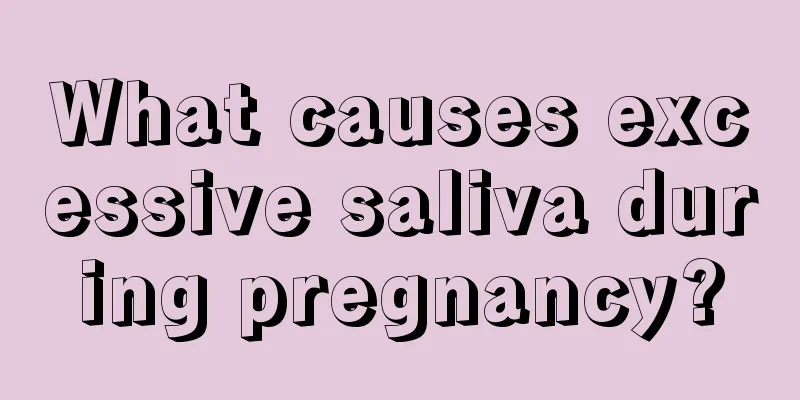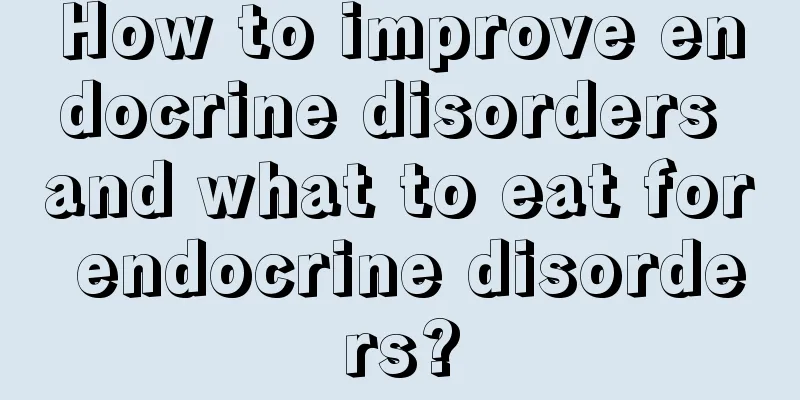What causes abdominal pain during breastfeeding?

|
Lower abdominal pain can occur in all groups and at all stages. Even if you pay close attention to your diet and daily life during breastfeeding, you may still suffer from lower abdominal pain. There are many reasons for lower abdominal pain during breastfeeding, including common acute gastroenteritis, intestinal cramps, acute appendicitis, acute cholecystitis, acute pancreatitis, peptic ulcer, ulcer rupture, acute peritonitis, intrahepatic bile duct stones, bile duct stones, subacute obstructive suppurative cholangitis, and urinary stones. Urinary tract infection, intestinal obstruction, rare liver abscess, subacute hemorrhagic necrotizing enterocolitis, intestinal torsion, intussusception, typhoid fever, intestinal tuberculosis, abdominal aortic aneurysm rupture, mesenteric vascular embolism, splenic infarction, etc. can all cause abdominal pain. Therefore, if abdominal pain occurs and it does not ease after resting and applying hot compresses, it is recommended to seek medical attention immediately to avoid delaying the condition! Some women may experience abdominal pain during breastfeeding. In the early stages of breastfeeding, it may be because the uterus has not recovered after giving birth. It is a normal physiological phenomenon of uterine repair. After a period of time, the uterus recovers and the abdominal pain will subside. In addition, abdominal pain in women may be caused by gynecological inflammation, including cervical erosion, adnexitis, and pelvic inflammatory disease, which can all cause abdominal pain. In addition, some women may suffer from digestive tract diseases during breastfeeding due to poor diet, including acute gastroenteritis, intestinal cramps, and even intestinal obstruction and gastrointestinal confusion. In short, if abdominal pain occurs during breastfeeding, go to the hospital for examination in time, identify the condition, and carry out symptomatic treatment. Lower abdominal pain is caused by inflammation of the gynecological pelvic organs, such as cystitis, cervicitis, ovarian cysts, uterine fibroids, pelvic effusion, etc. It may also be due to inflammation of the digestive tract, abdominal pain caused by abnormal contraction of the intestines or abnormal secretion of digestive enzymes. The diagnosis cannot be made simply from the symptoms. The patient should also combine other symptoms as well as physical examination and laboratory test results to diagnose the cause of the disease. If there is actual gynecological inflammation, the patient needs to be examined to determine whether it is bacterial, viral, chlamydia or Trichomonas infection, and targeted oral or intravenous drip of sensitive antibiotics for treatment. |
<<: Can ejaculation during lactation lead to pregnancy?
>>: What to do if your eyes are red and swollen during breastfeeding
Recommend
How to judge whether the palace cleaning is successful
After an artificial abortion, a uterine curettage...
Is it normal to bleed after a vaginal ultrasound during pregnancy?
It is abnormal to have bleeding symptoms after a ...
What is the cause of bloody leucorrhea?
For women, leucorrhea is a more common-sense sign...
Can pregnant women eat macadamia nuts?
In life, there must be many people who will encou...
Does brown blood two days before menstruation mean pregnancy?
When a woman becomes pregnant, she will definitel...
What to do if menstruation does not end cleanly
Prolonged menstruation means that women continue ...
What medicine is effective for uterine fibroids?
For people with uterine fibroids, they still need...
A woman's life may be over if she gets this disease
Women should take good care of themselves in this...
Meniere's disease not only causes vertigo, but also deafness
Meniere's disease, once known as "Menier...
Ruan Xiangyan: Guard the source of life and save patients' fertility!
As a female-specific gonadal organ, the ovary pla...
Treatment for menstruation delayed for four months
The incidence of menstrual problems cannot be und...
Brown vaginal discharge picture
In daily life, female friends pay more and more a...
Why is the discharge yellow before delivery?
When the due date is approaching, the physical co...
It is not advisable to lie flat after a few months of pregnancy
Pregnant women may experience a variety of sympto...
What should girls do if they have beard on their chins?
When a girl finds that she has a very obvious bea...









